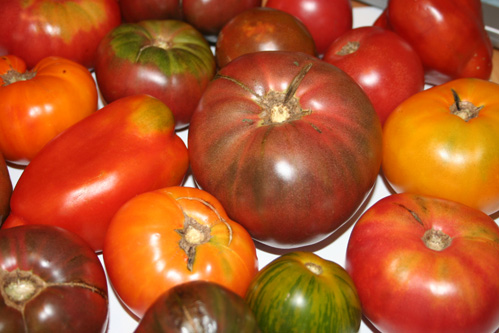We live in a world where we can buy tomatoes in December or avocados in Sweden. Thanks to globalization, we are able to transport food across countries, continents, and even oceans. This means getting produce, such as apples, all year long and being able to sustain larger populations in growing cities. Yet there are hidden consequences to transporting food long distances. Everything from the way your food is grown, stored, packaged, processed, transported, and cooked affects your environment. Imported or transported food can have huge tolls on climate change and human safety. Planes, trucks, and ships all spew out green house gases which contribute to climate change as well as pollute the atmosphere. The number of children with asthma is on the rise. "In fact, the California Air Resources Board estimates that in 2005 alone, 2,400 premature deaths and 2,800 hospital admissions for asthma and other diseases were attributable to direct and indirect exposure to diesel pollution from freight transport activities within the state" says The Natural Resource Defense Council.
So what can we do to help keep the air healthy? Buying food locally is the number one solution to the damage done by transporting food overseas. The carbon dioxide used to produce and transport local food is usually significantly lower than foreign, imported food. Not only does local food usually taste fresher, but it also supports your local economy. This keeps money in the community. Try to shop at farmer's markets rather than only at the grocery stores. Check to see where your food is coming from and how far it has traveled. Try buying and eat foods in season. Rather than eating strawberries in February, eat oranges and other citrus that naturally grows in your area during that month. While it is not always possible to buy local, buying food that has been shipped rather than flown has less of an impact on the environment because the green house gas emissions are less. You can alert your school to try selling foods that are locally grown. Starting a garden is a great way to get the freshest produce possible. Buying local food benefits your environment, economy, and health.







